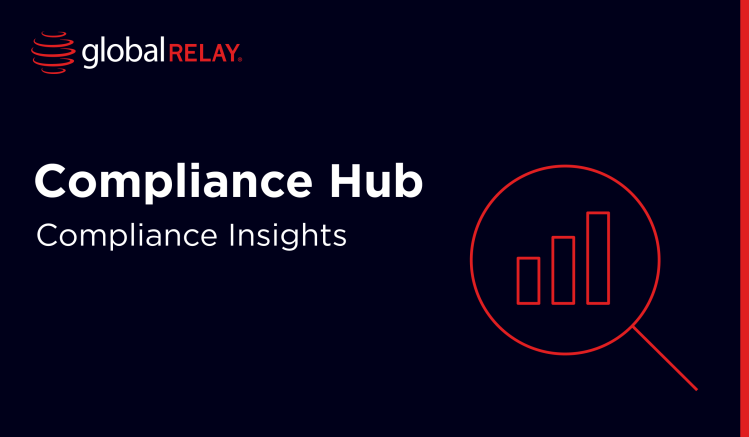Written by a human
The days of Post-it notes and paper filing cabinets are no longer. Now, even the most regulated companies rely on cloud archive tools and digital applications like Slack, Zoom, and AI-powered chatbots to communicate.
But while speed and efficiency have improved, compliance professionals have taken the hit. Higher data volumes to capture and monitor, less transparent eDiscovery, and regulatory blind spots are all common challenges.
The transformation from manual paper trails to digital ecosystems means that firms are now in a position where they must prioritize AI in order to stay ahead of today’s compliance demands. As regulators, governments, and customers implement artificial intelligence into their workflows and routines, organizations are fast realizing they must do the same in order to keep up. The use cases are vast – from improving efficiencies and communication for customer facing teams, to detecting and monitoring misconduct or noncompliance in the back end. For future-facing firms, learning how to use AI-powered solutions, like Global Relay’s suite of Communications App, Archive, Surveillance, and eDiscovery tools will be key as regulations – and technologies – continue to evolve.
The timeline of communication compliance
The historic compliance era
Anybody who’s been working in compliance for more than two decades will be familiar with paper record handling. Filing cabinets and manual audits were commonplace before the early 2000s, and regulatory focus was mainly on physical disclosure requirements, like early Securities and Exchange Commission (SEC) rules governing printed financial reports and memos.
One example dates back to the late 1960s, when the SEC investigated Texas Gulf Sulphur Company over insider trading. It relied heavily on paper-based communication:
- Analysts scrutinized profit warnings
- Board minutes were read
- Internal memoranda revealed illicit trading before public announcements
Investigators pieced together the violation using tangible evidence – documented on paper. It set a strong precedent for how communication compliance was enforced in a fully analog world.
When email was introduced, compliance teams scrambled to keep up as suddenly, entire conversations could happen with a click. New email retention policies caused companies to take their archives online, instigating the digital era.
How the digital revolution brought compliance challenges
By the 2010s, the workplace had evolved. Instant messaging, social media, and collaboration platforms like Microsoft Teams and Slack were no longer considered risky or too difficult to monitor; they were the new norm.
With that shift came puzzling digital governance trends: how to capture, secure, and supervise communications that happened across a fragmented, often informal web of channels.
Capturing fragmented messages
Unlike sprawling email systems, chat logs on Slack or Teams often slipped past archiving systems entirely. More worryingly, platforms like WhatsApp, where client and colleague communications sometimes took place, were unmonitored altogether.
Data security risks
Communication compliance trends reveal that third-party platforms often introduce new vulnerabilities, such as weak access controls or unsecured integrations. Sensitive information and client data could slip through gaps in supervision.
Regulatory complexity
Around the world, compliance officers needed to reconcile retention and surveillance requirements under laws like the General Data Protection Regulation (GDPR) in Europe, as well as evolving data rules in the U.S., such as the California Consumer Privacy Act (CCPA), all while keeping pace with rapidly evolving tools. Multi-channel compliance would be key.
A FINRA member firm was fined $250,000 by the regulator in 2024 for failing to preserve and review over 1.25 million business-related electronic communications, most of which were mass marketing emails. They violated multiple rules, including SEC Rule 17a-4 (recordkeeping) and FINRA Rule 3110 (supervision).
Crucially, a supervisory system that didn’t guarantee capture of emails, instant messages, or e-signed documents meant they couldn’t perform employee communication monitoring or review these communications for auditors or regulators.
Modern compliance in a remote work era
The 2020s reshaped the compliance landscape as remote and hybrid work became the norm. Employees logging in from home networks or personal devices blurred the boundaries of corporate oversight, and BYOD (bring your own device) policies promised flexibility.
But the ‘new normal’ also opened the door to fragmented communication streams and inconsistent security practices. At the same time, encrypted apps like WhatsApp and Signal gained traction, making it even harder for firms to capture and supervise business communications.
Regulators responded in force to remote work compliance. In 2022, the SEC charged 16 financial firms more than $1.1 billion for failing to preserve off-channel communications, sending a clear message that informal messaging would not be overlooked. Since then, waves of similar actions have continued, with settlements reaching into the hundreds of millions.
To keep pace, the regulatory compliance evolution has turned to technology. Cloud-based archiving platforms, such as Global Relay’s Archive, now capture and preserve conversations across all channels while AI-powered Surveillance tools scan for risky language in real time. These advancements make it possible to flag potential violations faster than ever before, while balancing rigorous oversight.
What’s next for communication compliance?
From 2025 onwards, next-generation AI will continue to play a bigger role in monitoring and auditing communications, while regulators push for more global consistency. But it’s also likely that employee privacy debates will intensify as oversight tools grow more powerful.
Staying informed on technology, regulations, and enforcement trends will be essential for keeping compliance effective and proactive.
Many of these regulations are rapidly evolving, and short windows for compliance can place the change management process at risk of errors and security risks. Therefore, firms must:
- Stay on top of regulatory change
- Build risk assessments and actions into the change management process
- Integrate workplace data privacy effectively
- Maintain oversight for both compliance and security reasons
Alternatively, choose a solution that provides the regulatory intelligence for you, like Global Relay. With a machine learning platform that is updated as regulations and AI best practices evolve, and military-grade encryption, we help regulated entities maintain their operational resilience and achieve compliance.
In conclusion
Workplace communication has significantly evolved over the years, from paper records and filing cabinets to a sprawling digital ecosystem powered by email, collaboration platforms, and AI.
Each shift has brought fresh compliance challenges; from archiving emails in the 1990s, to monitoring encrypted apps in the 2010s, and navigating AI-driven oversight and global regulations today. The lesson is clear: businesses must adapt quickly or risk falling behind in an era of constant change.
To dive deeper into best practices, case studies, and regulatory updates, explore the resources section for more compliance insights and guides.

